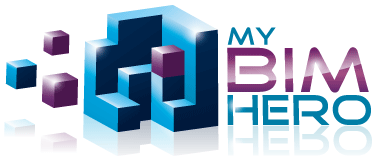There is such a wealth of information at this conference that would make any tech geek gorge till they are stuffed like a Thanksgiving bird - maybe that's why it's held the week after Thanksgiving. Not only do you learn about the latest technology, but you get a sweet taste for what's just around the bend in the near future. It covers Autodesk products and how they can be integrated into your process workflow in the fields of Architecture, Engineering, & Construction, Film & Entertainment, along with Manufacturing.
The week kicked off with the HOK Global BIM Summit and Keynote Welcome Address by Carl Bass (Autodesk), Chris Anderson (Wired Magazine), and Jeffrey McGrew (BecauseWeCan.org). This year I focused on the construction aspect of BIM and took classes and labs in Navisworks, Quantity Takeoff, BIM Project Execution Plans, and mind boggling presentation graphics. I have to say that I found the labs this year to be the best part as you get to roll up your sleeves and dive right into working. Though I cut classes most of the day Tuesday to attend the Innovation Forums learning and being inspired by the technology of the future being created today. Of course the best part of the week is meeting and talking with some of the great minds and leaders in the industry.
I highly recommend this as a worthwhile event for anyone in the AECO industry. Particularly if you are a technology geek - and there were many. If only I had video of the people passing by on the escalator feverishly punching screens of all shapes and sizes during the precious 47 seconds they had when they didn't have to look up. Even if you have to pay for it yourself - it is the best investment in yourself you can ever make. Many people do not know, but if your firm is on subscription (and 85% are), then you have access to all the class materials, podcasts, and screencasts online for past AU sessions. Check with your software manager and they should be able to set you up with a user name.
Go check it out in 2012 - you won't be disappointed. You will learn a lot and maybe you just might walk away from the tables with some coin too!
I highly recommend this as a worthwhile event for anyone in the AECO industry. Particularly if you are a technology geek - and there were many. If only I had video of the people passing by on the escalator feverishly punching screens of all shapes and sizes during the precious 47 seconds they had when they didn't have to look up. Even if you have to pay for it yourself - it is the best investment in yourself you can ever make. Many people do not know, but if your firm is on subscription (and 85% are), then you have access to all the class materials, podcasts, and screencasts online for past AU sessions. Check with your software manager and they should be able to set you up with a user name.
Go check it out in 2012 - you won't be disappointed. You will learn a lot and maybe you just might walk away from the tables with some coin too!
